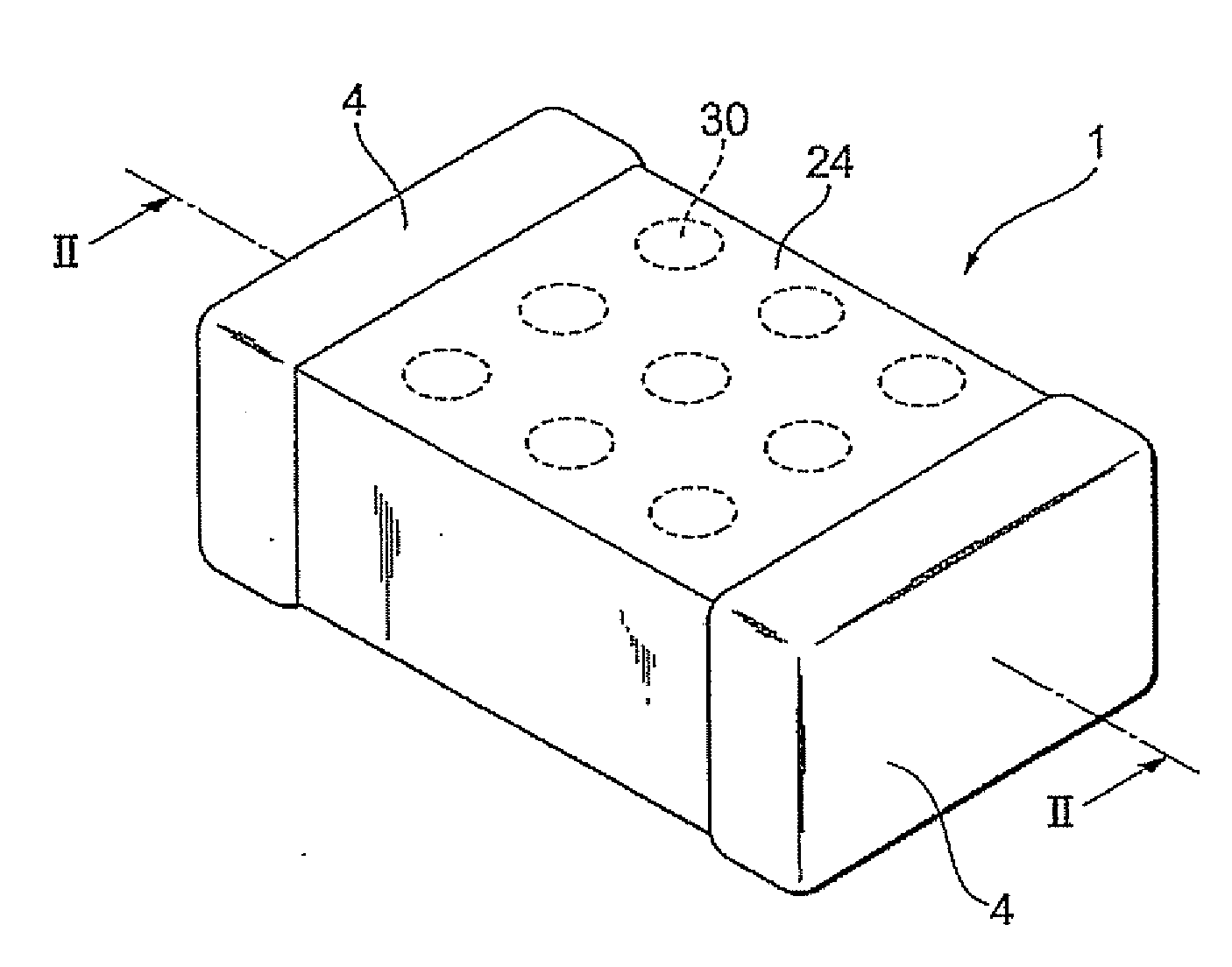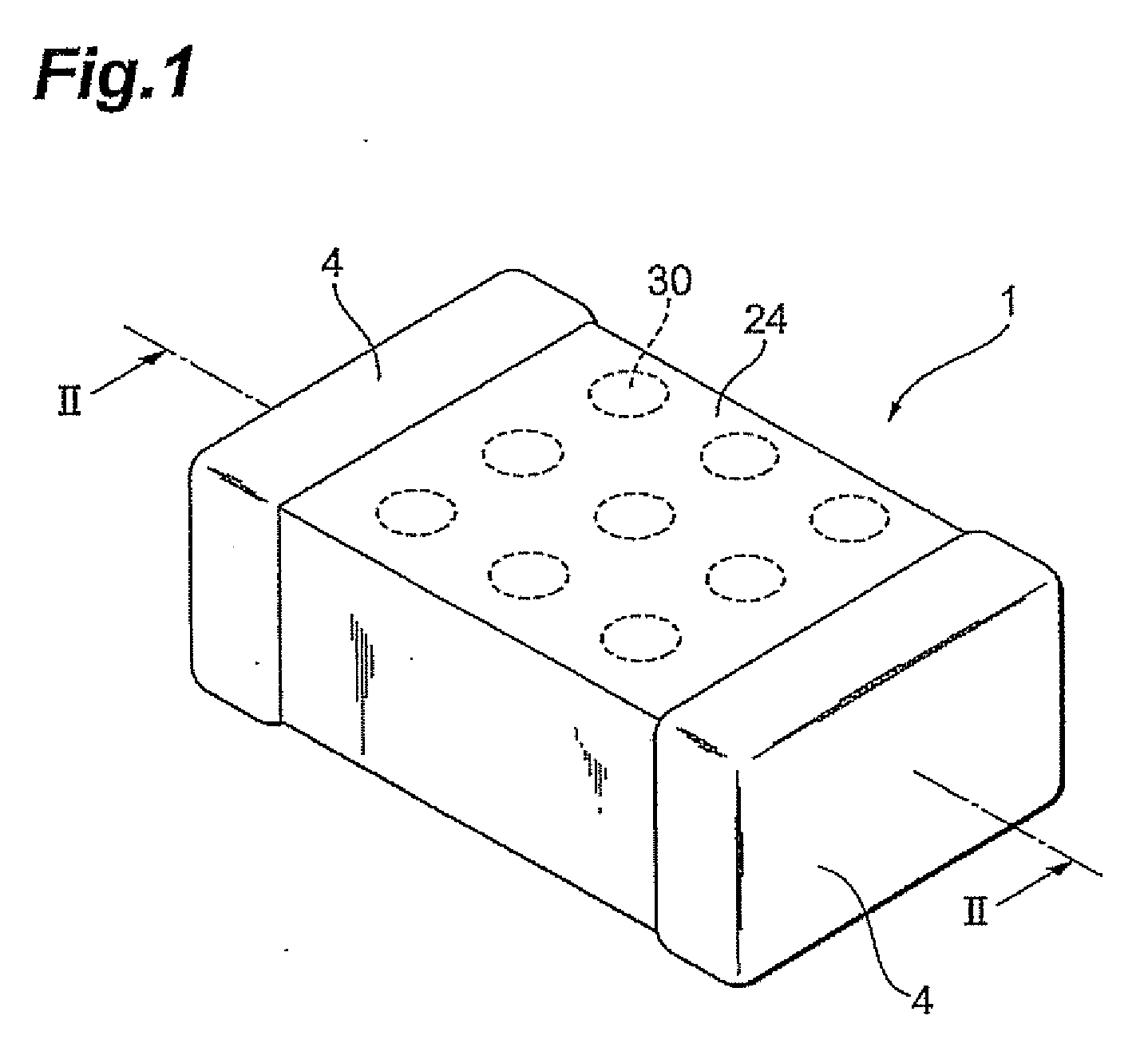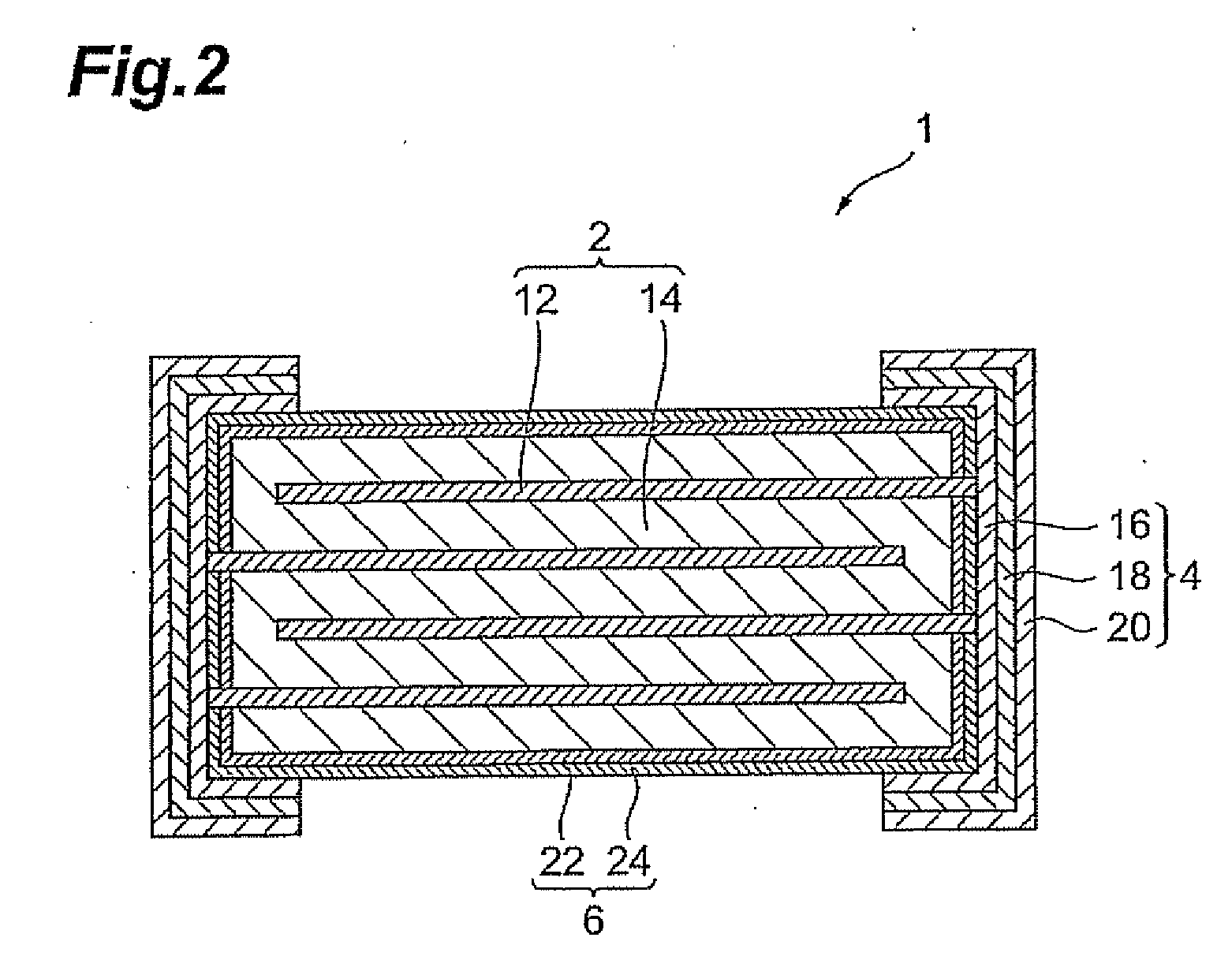Ceramic element
a ceramic element and element technology, applied in the field of ceramic elements, can solve the problems of increasing the difficulty of meeting such demand using conventional methods, ineffectiveness, external electrode shorting, etc., and achieve the effect of preventing surface insulation resistance loss, and effectively controlling plating spread and plating adhesion
- Summary
- Abstract
- Description
- Claims
- Application Information
AI Technical Summary
Benefits of technology
Problems solved by technology
Method used
Image
Examples
example 1
[0052]2000 of the resulting varistor bodies were introduced into a barrel (barrel diameter 200 mm and depth 200 mm) rotary RF sputtering equipment, and sputtering was carried out for a treatment time of 1.5 hours at 20 barrel rpm using SiO2 as the target, thereby forming a protective layer on the surfaces of the varistor bodies.
[0053]A metallic paste material containing silver (Ag) was applied to both opposing end faces of the varistor body on which the protective layer had been formed, and the paste was then baked at about 550 to 850° C., forming a base electrode. The outer surface of the base electrode was plated with nickel and then with stannum. This resulted in a varistor in which a protective layer, base electrode, and plating layers had been formed on the varistor body.
example 2
[0054]Varistors were obtained in the same manner as in Example 1 except that 25,000 varistor bodies were introduced into the barrel rotary RF sputtering equipment, and the treatment time was 5 hours.
[0055]Comparative Example 1
[0056]A protective layer based on SiO2 was formed by laser ablation on the surface of a varistor body. A varistor was then obtained by forming the base electrode and plating layers in the same manner as in Example 1.
[0057]Investigation of Protective Layer
[0058]Analysis by STEM-EDS mapping of the structure of the protective layers in the varistors produced above revealed that two-layered structures composed of a first layer containing a silicon oxide and a second layer based on a silicon oxide and containing the element zinc had been formed in the examples. In the comparative example, on the other hand, a single-layered protective layer containing a silicon oxide was formed.
[0059]Plating Spread and Plating Adhesion
[0060]The appearance of the varistors obtained i...
PUM
| Property | Measurement | Unit |
|---|---|---|
| aaaaa | aaaaa |
Abstract
Description
Claims
Application Information
 Login to View More
Login to View More - R&D
- Intellectual Property
- Life Sciences
- Materials
- Tech Scout
- Unparalleled Data Quality
- Higher Quality Content
- 60% Fewer Hallucinations
Browse by: Latest US Patents, China's latest patents, Technical Efficacy Thesaurus, Application Domain, Technology Topic, Popular Technical Reports.
© 2025 PatSnap. All rights reserved.Legal|Privacy policy|Modern Slavery Act Transparency Statement|Sitemap|About US| Contact US: help@patsnap.com



